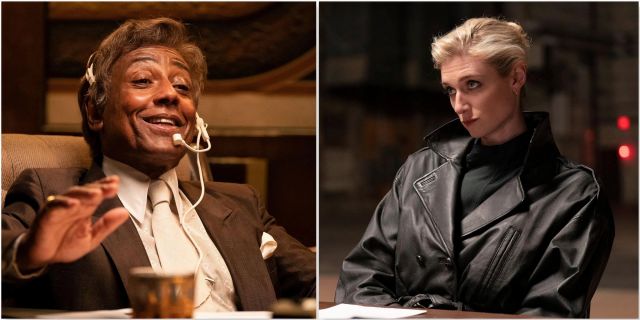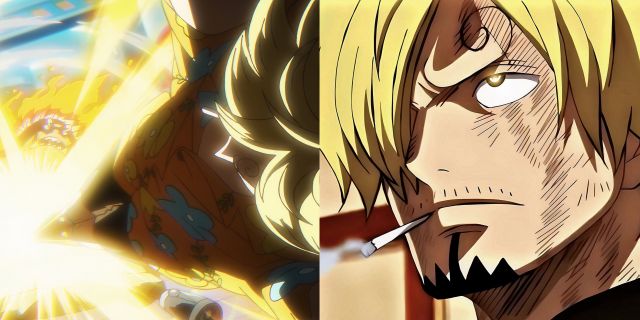Quick Links
- Eomer Finds Théodred At The Fords Of Isen
- Aragorn Meets Brego
- Faramir’s Memory Of Boromir
- Legolas and Gimli’s Contest
Released in 2002, The Lord of the Rings: The Two Towers is the epic continuation of the film trilogy adapted from J.R.R. Tolkien’s celebrated books. In this second part of the series, the fellowship has broken, and each member goes on their own journey in the quest to save Middle-earth. The Two Towers includes some of the most iconic scenes of the trilogy, including the introduction of Gollum, and the Battle of Helm’s Deep.
With the release of the extended edition of The Two Towers on digital as well as DVD and Blu-ray, LOTR enthusiasts have even more exciting moments of the movie to enjoy. Some of the footage is edited into already existing scenes, while others are completely new. Here are the best moments from the extended edition that made The Two Towers even better than the original.
Eomer Finds Théodred At The Fords Of Isen
In the theatrical version of The Two Towers, Eomer first appears on-screen while at the side of Prince Théodred, who is mortally wounded. He and Eowyn then go before King Théoden, reporting that the orcs are attacking on Saruman’s orders. Thanks to Grima Wormtongue’s influence and Saruman’s curse, Théoden is unresponsive, and Eomer is banished soon afterward by Grima.
A scene added beforehand in the extended version of The Two Towers offers more information about Théodred’s condition and Eomer’s discovery of Saruman’s betrayal. Accompanied by Rohirrim soldiers, Eomer scours a bloodied battlefield in the Fords of Isen, as rain pours down around them. He notices that one of the dead orcs has the White Hand of Saruman marked on its helmet. As a soldier calls out to him, Eomer rushes over to find his cousin, Théodred, alive – but just barely. Eomer then pulls Théodred out of the mud and carries him on his horse to the Great Hall.
It may be a short scene, but this sequence provides much needed exposition to the plot surrounding Rohan, Eomer, and Théoden. In the original version, the scene with Théodred feels so minuscule that it is left unclear as to who this dying man is, what happened to him, and how Eomer found out about the orcs siding with Saruman. The scene gives just a little bit more clarification, and it does it in less than a minute with minimal dialogue.
Aragorn Meets Brego
As many Lord of the Rings fans know, actor Viggo Mortensen, who played Aragorn, is an avid horse lover. He got along famously well with the horses he worked with on set, and even bought a few of them for his own (two of which Mortensen reported have since died).
To add to that fact, an additional scene in The Two Towers extended edition also puts a spotlight on the bond between the character of Aragorn and his trusty stallion, Brego. Shortly after Théoden’s decision for his people to flee Edoras, a scene in the stables shows two Rohirrim stable hands trying to calm a rebellious chestnut horse. As Aragorn approaches, he speaks Sindarin to the horse and immediately calms it. Eowyn tells him the horse’s name is Brego, named after a former king of Rohan, and Aragorn asks that the horse be freed.
This scene is sadly missing from the original version, and it serves more purpose than just showing off Aragorn’s animal handling skills. For the keen-eyed viewers, Brego is the one who saves Aragorn when he finds him unconscious on the riverbank, and Aragorn even addresses him by name. It was thanks to Aragorn befriending the horse in that earlier scene that his life was saved, and he made it to Helm’s Deep.
Faramir’s Memory Of Boromir
As Boromir dies at the end of The Fellowship of the Ring, his brother, Faramir, is introduced in The Two Towers. When Faramir and his men take Sam and Frodo hostage, he reveals his relationship with Boromir, as well as the news of Boromir’s death. Although Faramir at first seems to be following in his brother’s footsteps with his lust for the One Ring, in the end he manages to overcome the temptation and aids Frodo and Sam in their journey.
There is a moment in the theatrical Two Towers when Faramir is seen holding Boromir’s broken horn in thoughtful repose. In the extended edition, Faramir’s thoughts drift to a memory of the last time he saw his brother. In a flashback, Boromir gives a victory speech after the reclaiming of Osgiliath from Mordor’s army, and Faramir reunites with him afterward. Their celebration is cut short when their father, Denethor, arrives, and demands that Boromir leave for Rivendell to take his place at the Council of Elrond. The staunch Steward of Gondor makes it very clear that he favors Boromir over Faramir, even after Boromir sticks up for his little brother.
Admittedly, the scene does run a bit too long – a whopping four minutes and forty seconds, to be precise. Yet it helps the audience to understand not only the close relationship between Boromir and Faramir, but the strained relationship each of them has with Denethor. It also demonstrates the enormous pressure that both men were under to please their father and bring glory back to Gondor.
Legolas and Gimli’s Contest
One of the most popular relationships in the LOTR trilogy is the one between Gimli the dwarf and Legolas the wood elf. Though the two of them had a rocky start due to the tension between their races, the friendship between these two fellowship members evolved into a powerful bond.
One memorable moment between Legolas and Gimli from the original text was stitched back into the extended Two Towers movie. At the Battle of Helm’s Deep, between hacking away at the horde of Uruk-hai, Gimli brags to Legolas that he has slain two of the enemy. Legolas claps back with his impressive kill count of 17, and Gimli, refusing to be outdone, is spurred into a frenzy, thus inciting a friendly competition.
After the battle is won, Legolas smugly approaches Gimli and announces his score of 42. Gimli, however, is sitting atop his 43rd kill with his battleaxe still sticking out of its skull. In a bold move, Legolas shoots the dead body with an arrow, claiming that it was twitching, to which Gimli replies that this was due to his ax being “embedded in his nervous system.” It’s not only a great throwback to the book, but also a hilarious scene.











Leave a Reply